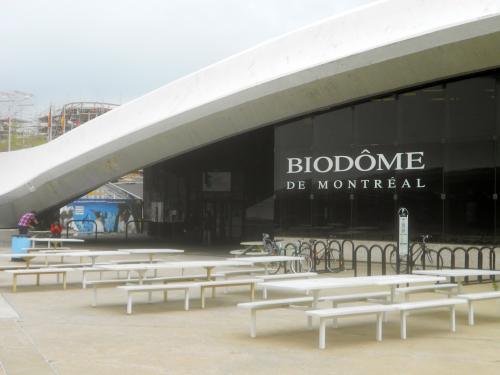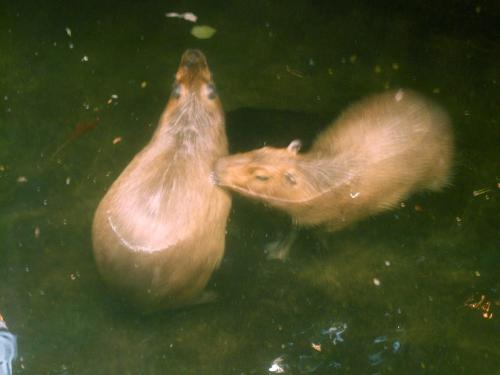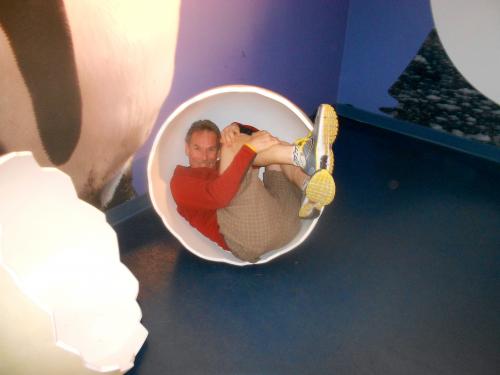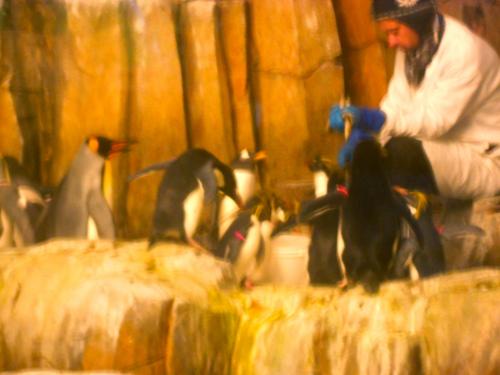It was a very exciting day today. The people I have met and the sessions that I have attended over the last few days are really giving me some good connections, activities, and content for my classroom and I hope my school district and beyond. As a local activity, the conference directors offered to the teachers the opportunity to visit the Biodome for free. The building that houses the Biodome is part of the 1976 Olympic facility. This building was the site for the cycling events as the Velodrome. The building was turned in to the Biodome and opened to the public in 1992.

The Biodome houses several exhibits that focus on biomes that are found in the Americas. The first section we entered was a tropical rain forest that was built as a replica to the rain forests that are found in South America. The first thing you notice as you walk into the forest is the size of the plants and the room. There are huge trees and vines growing all around with plenty of animals living high off the ground. We were greeted by a Grey-Winged Trumpeter bird as soon as we were on the walkway. Many other birds flew overhead such as a Scarlet Ibis, Military Macaws, and small Spangled Cotinga. On the ground we saw a Golden Lion Tamarin being fed while a pair of Capybaras were standing in the river. There were also plenty of fish and even a cave area with two species of bats flying around.


The next ecosystem we entered was the Maple Forest. This is a replica of a woodland area that would be common in the northeastern United States and southern Canada. Not only did we see various types of maple trees and fir trees, we also came upon an American Beaver and a pair of American Porcupines. Screened into separate areas we also looked at a Canada Lynx and several River Otters. All the time there were over a dozen types of birds flying over our heads and singing their songs. From there we entered the Gulf of St. Lawrence area, which is the river that separates the U.S. northeast states from the more northerly Canadian provinces. This is an estuary environment that includes saltwater species. We saw Atlantic Halibut, Atlantic Salmon, Sugar Kelp and many other fish and invertebrate organisms. The other half of this area was dedicated to the various birds of the region. There were several types of ducks and shore birds, including Black-Legged Kittiwakes and Common Terns.

My favorite was the last area modeled around the Sub-Polar Regions of Canada as well as some species from around the Antarctic. The areas that we walked in were not cold because the animals were all behind glass walls that kept them separate from us. At first there were many birds such as Razorbills and Atlantic Puffins swimming in the pools and diving all around. In the last section we came to one my favorite ground of birds, the penguins! There were four species in the room and swimming in the water. The Macaroni Penguins were the smallest and looked really cool with their yellow eyebrows. The next largest were the Northern Rockhopper Penguins from the sub-Antarctic islands. Then came the Gentoo Penguins who were mostly taking up the swim duty. The largest species in the exhibit were the King Penguins. We arrived around feeding time so there was a calm group of birds standing around the man with the fish. It was great to see all of these animals in one place.


Comments